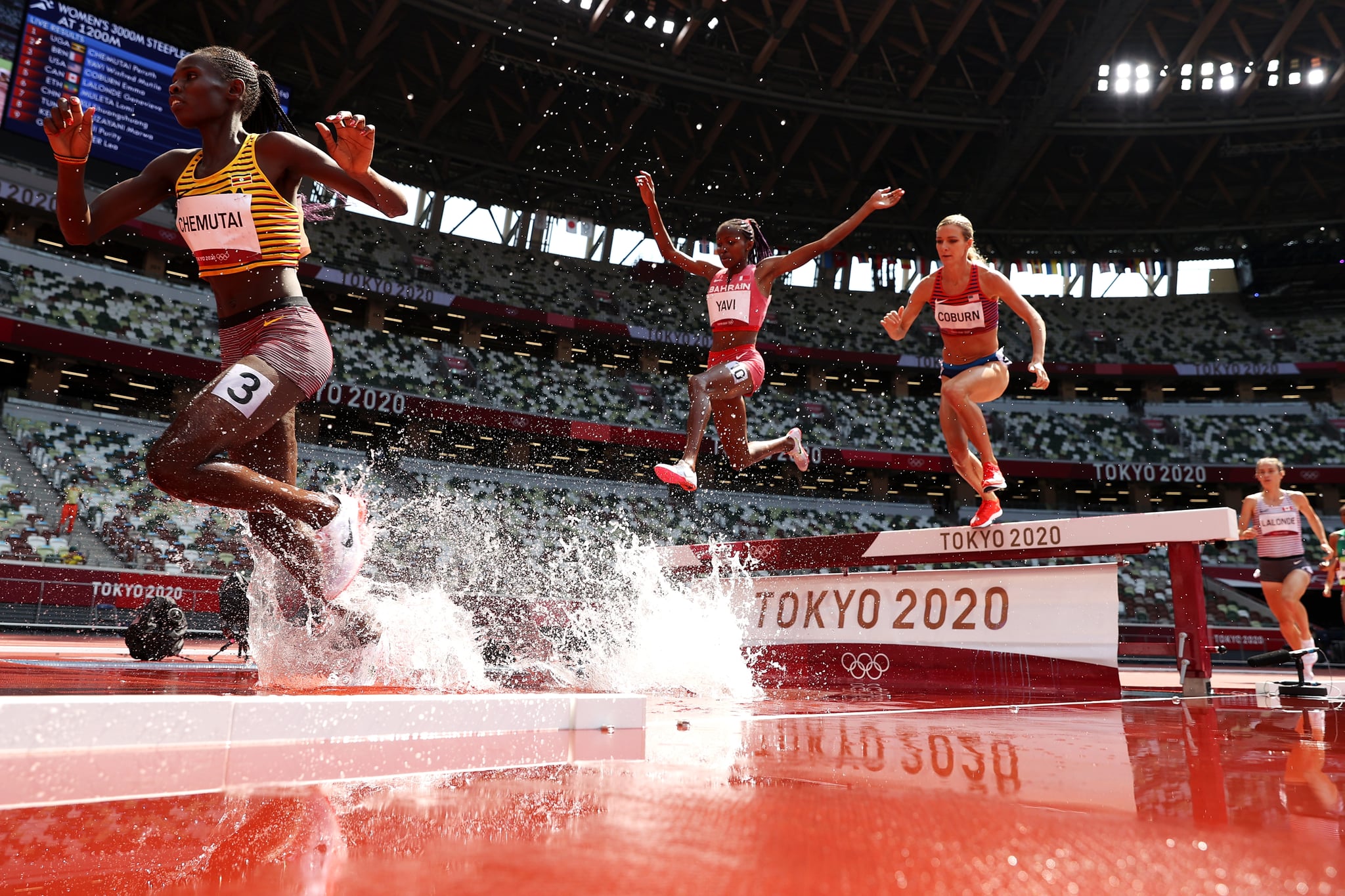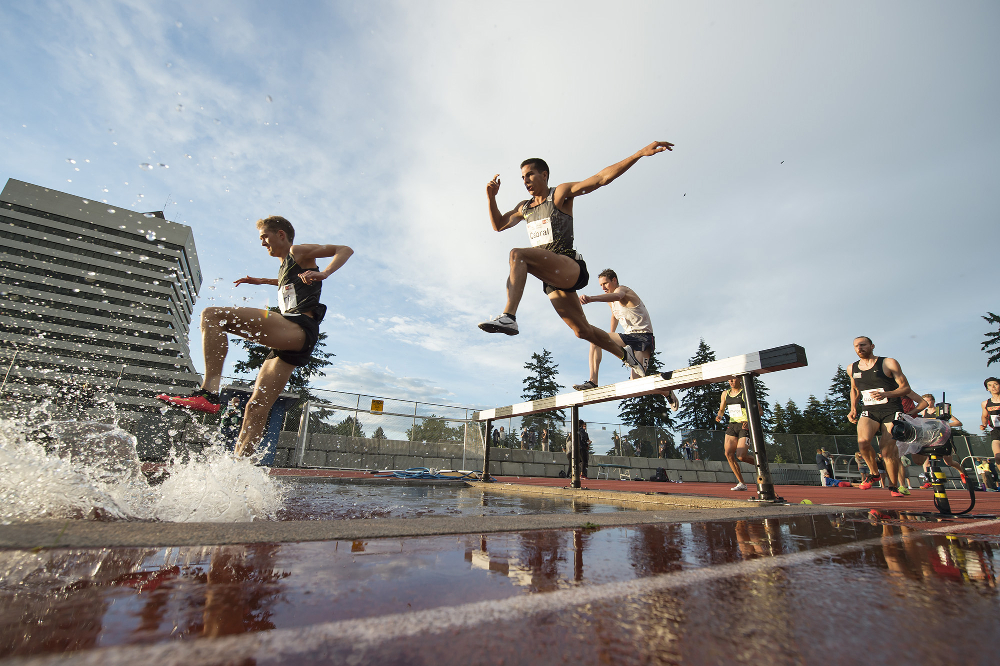Steeplechase History and Evolution: Steeplechase Olympics

The steeplechase, a thrilling equestrian discipline, boasts a rich history intertwined with the evolution of horse racing and the development of equestrian sports. Its origins trace back to the 18th century, where it emerged as a unique and challenging form of racing.
Origins and Historical Significance
The steeplechase finds its roots in the early days of horse racing in England. In the 18th century, a popular form of entertainment involved racing horses across the countryside, often using landmarks such as church steeples as navigational points. These races, known as “steeple chases,” became increasingly organized and formalized over time, leading to the development of the modern steeplechase as we know it today.
Evolution of Rules and Regulations, Steeplechase olympics
The early steeplechase races were characterized by their informality and lack of standardized rules. However, as the sport gained popularity, the need for regulation became apparent. The establishment of formal racing organizations, such as the Jockey Club in England, led to the development of standardized rules and regulations.
- One of the key changes in steeplechase rules was the introduction of obstacles. Initially, races involved navigating natural obstacles such as hedges, ditches, and streams. However, over time, the inclusion of specifically designed obstacles, such as water jumps, fences, and walls, became a defining feature of the steeplechase.
- The evolution of steeplechase rules also involved the development of course design and safety standards. Early races were often run over challenging and unpredictable terrain. However, with the rise of organized racing, course design became more standardized, with emphasis on safety for both horse and rider.
- Another significant development was the introduction of weight restrictions for horses and riders. These restrictions were introduced to ensure fair competition and to prevent horses from being overloaded. The weight restrictions have evolved over time, reflecting the changing size and strength of racehorses.
Comparison with Other Equestrian Disciplines
The steeplechase stands out from other equestrian disciplines due to its unique combination of speed, agility, and endurance. While disciplines like flat racing focus primarily on speed, and show jumping emphasizes technical skill and precision, the steeplechase demands a unique blend of these qualities.
- The steeplechase is characterized by its challenging courses, which include a variety of obstacles that require horses to jump over and navigate around. This demands a high level of athleticism and agility from both horse and rider.
- The steeplechase also requires a high level of endurance, as races can be quite long and demanding. Horses must be able to maintain their speed and stamina over extended periods, while riders must be physically and mentally fit to handle the challenges of the course.
- In contrast to other disciplines, the steeplechase places a strong emphasis on teamwork between horse and rider. Riders must establish a strong bond with their horses, trusting them to navigate the obstacles safely and efficiently.
Steeplechase at the Olympics
/yuliyazaripova-MichaelRegan-56ca28b93df78cfb3792b4f7.jpg)
The steeplechase, a thrilling and demanding event that combines the elements of track running with obstacle-clearing, has held a prominent place in the Olympic Games since its debut in 1900. This unique race, requiring both speed and agility, has captured the hearts of spectators and athletes alike, solidifying its position as a cornerstone of the Olympic program.
The Steeplechase’s Olympic Debut and Significance
The steeplechase first appeared at the 1900 Summer Olympics in Paris, as part of the inaugural Olympic Games. It was a 2,500-meter race with 28 hurdles and a water jump, challenging athletes to demonstrate their endurance, speed, and tactical prowess. The inclusion of the steeplechase in the Games marked a significant step in expanding the range of athletic disciplines featured in the Olympics, showcasing the diverse talents and abilities of athletes worldwide. The event’s presence in the Games helped to further solidify the Olympics’ reputation as a platform for showcasing the pinnacle of human athletic achievement.
Key Athletes Who Have Shaped the History of Olympic Steeplechase
The steeplechase has witnessed the rise of numerous legendary athletes who have left an indelible mark on the event’s history.
- Volmari Iso-Hollo (Finland), a dominant force in the 1920s and 1930s, won two Olympic gold medals in the steeplechase (1924 and 1932). His exceptional speed and technique made him a formidable competitor, earning him the moniker “The Flying Finn.”
- Gunder Hägg (Sweden), a renowned middle-distance runner, also excelled in the steeplechase. He claimed Olympic gold in 1948, setting a new world record in the process. His versatility and dominance across multiple distances cemented his legacy as one of the greatest runners of his era.
- Kenisis Bekele (Ethiopia), a true icon of modern steeplechase, holds the world record for the event. He has won two Olympic gold medals (2008 and 2012), showcasing exceptional endurance and tactical brilliance. His remarkable achievements have made him a role model for aspiring steeplechasers worldwide.
Impact of Steeplechase on the Olympic Program
The steeplechase has become an integral part of the Olympic program, captivating audiences with its blend of speed, strategy, and daring. The event’s popularity stems from its unique challenges, requiring athletes to navigate obstacles while maintaining their pace. Its inclusion in the Games has contributed to the Olympics’ narrative of pushing human limits and celebrating athletic excellence. The steeplechase has consistently garnered significant viewership, adding to the overall excitement and spectacle of the Olympic Games.
Steeplechase Techniques and Strategies

The steeplechase is a unique and demanding event that combines the endurance of long-distance running with the technical challenges of obstacle negotiation. Success in this discipline requires a blend of physical strength, mental fortitude, and strategic awareness.
Techniques for Obstacle Negotiation
Effective obstacle negotiation is paramount in steeplechase racing. The water jump, in particular, demands precision and timing.
- Approaching the Water Jump: Runners should approach the jump with a controlled stride, maintaining momentum and a balanced posture. The ideal approach angle is slightly diagonal, allowing for a smooth transition onto the barrier.
- Takeoff and Flight: The takeoff point is crucial. Runners should aim to launch themselves from a position slightly in front of the barrier, using a powerful push-off with their dominant leg. The flight phase should be characterized by a fluid and controlled movement, ensuring a smooth landing on the other side.
- Landing and Recovery: Upon landing, runners should absorb the impact with their knees slightly bent and quickly regain their balance. A swift transition into the next stride is essential to maintain momentum and avoid losing ground.
Race Phases and Strategies
The steeplechase race is divided into distinct phases, each requiring specific strategies and tactics.
- Early Stages: The initial laps are typically characterized by a relatively slow pace, allowing runners to establish their position and assess the competition. Strategic positioning is key, avoiding being boxed in or caught in a tight pack.
- Mid-Race: As the race progresses, the pace intensifies, and runners begin to make their move. This phase requires a balance of endurance and tactical awareness. Maintaining a consistent pace while minimizing energy expenditure is crucial.
- Final Lap: The final lap is a test of speed and determination. Runners must summon their remaining reserves to push for the finish line. A well-timed surge or a strong finishing kick can make the difference between victory and defeat.
Training Regimen for Steeplechase Runners
A comprehensive training regimen for steeplechase runners should address both endurance and technical aspects of the event.
- Endurance Training: Long runs, tempo runs, and interval training are essential for building aerobic capacity and endurance. These sessions should be progressively increased in distance and intensity over time.
- Strength and Conditioning: Strength training exercises, such as squats, lunges, and core work, are crucial for developing lower body strength and stability. These exercises help runners generate power for the water jump and maintain a strong running form.
- Obstacle Training: Specific drills focusing on obstacle negotiation are vital. These drills should simulate the actual race conditions, including the water jump, hurdles, and other barriers. Progressive overload and repetition are key to improving technique and confidence.
- Mental Training: Steeplechase racing requires a strong mental game. Visualization techniques, mindfulness practices, and positive self-talk can help runners maintain focus and overcome challenges.
Steeplechase olympics – The steeplechase, a grueling event in the Olympics, demands a unique blend of speed, endurance, and agility as athletes navigate water jumps and hurdles. One of the most prominent figures in the modern era of the steeplechase is Soufiane El Bakkali , a Moroccan athlete known for his exceptional pace and strategic race tactics.
El Bakkali’s success has helped elevate the steeplechase to new heights of excitement and competition, solidifying its place as a captivating event in the Olympic Games.
The steeplechase, a grueling Olympic event, demands both speed and agility as athletes navigate a course littered with hurdles and water jumps. While the steeplechase tests the physical prowess of competitors, the event also highlights the importance of perseverance and resilience, qualities that are also essential in overcoming challenges like dental issues.
Indeed, the history of dentistry is intertwined with architectural innovations, as exemplified by the Quincy Hall teeth , a remarkable discovery that sheds light on early dental practices. Ultimately, the steeplechase and the evolution of dental care both demonstrate the human capacity to adapt and overcome obstacles.